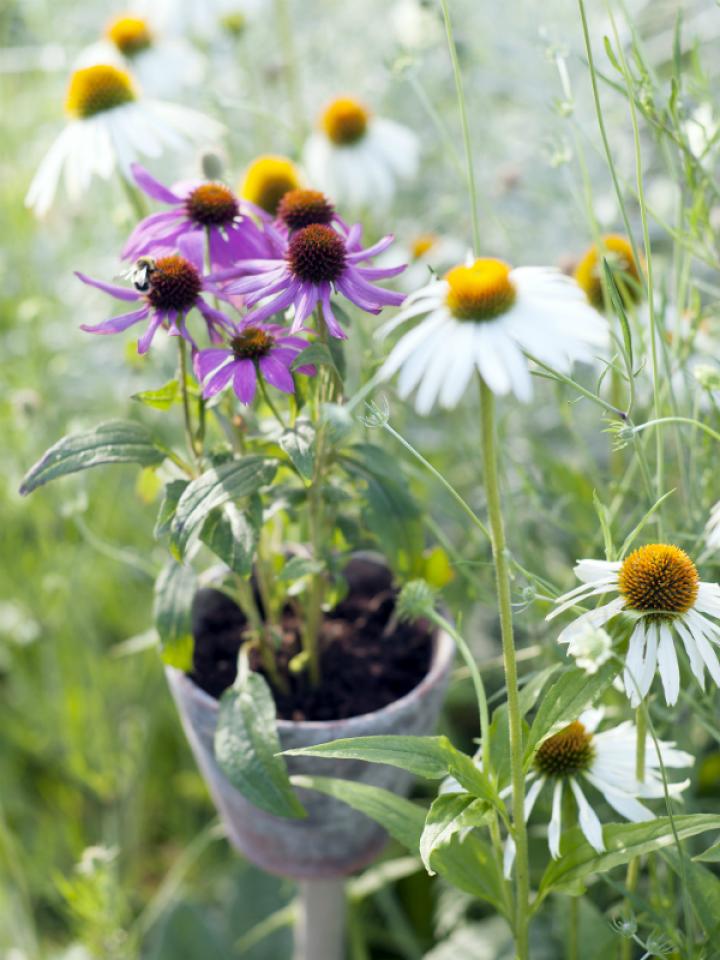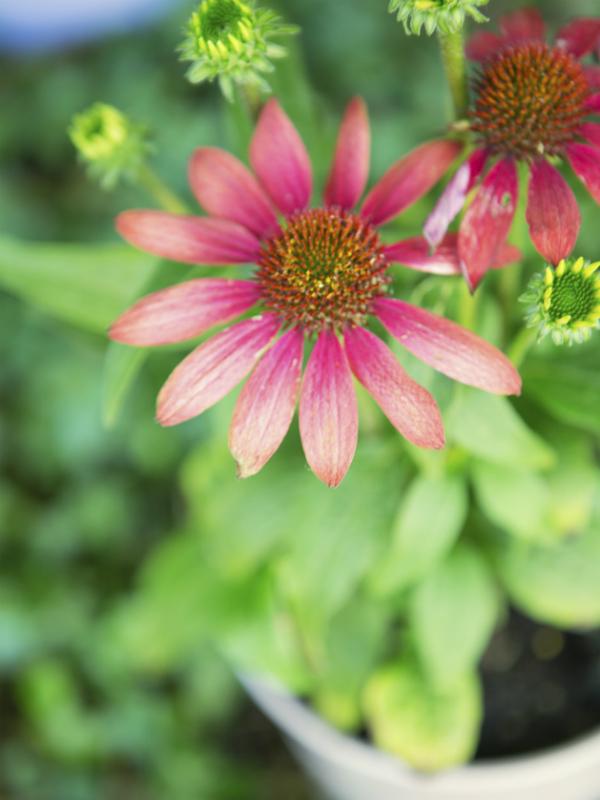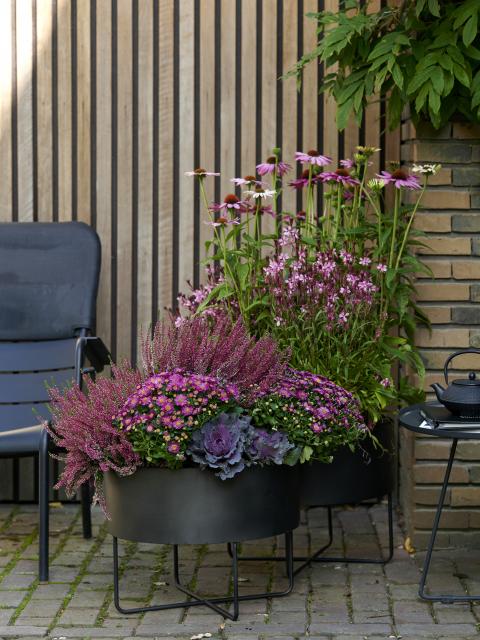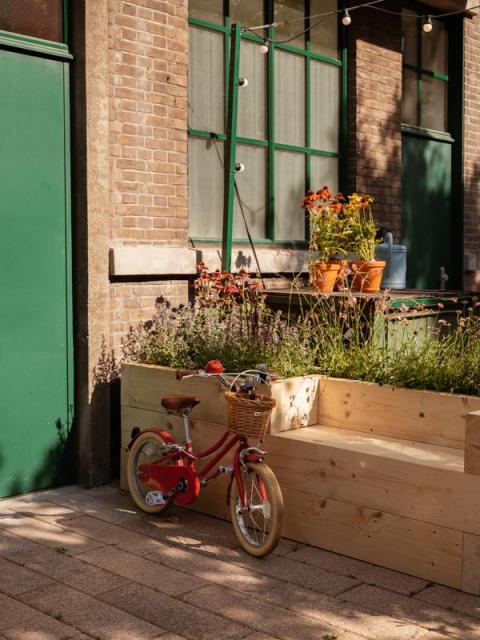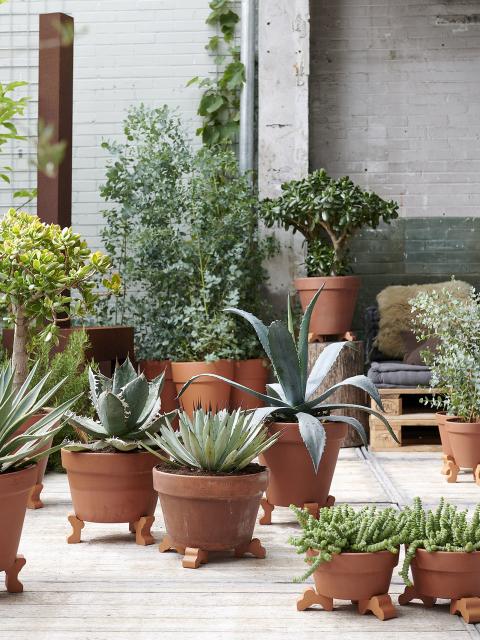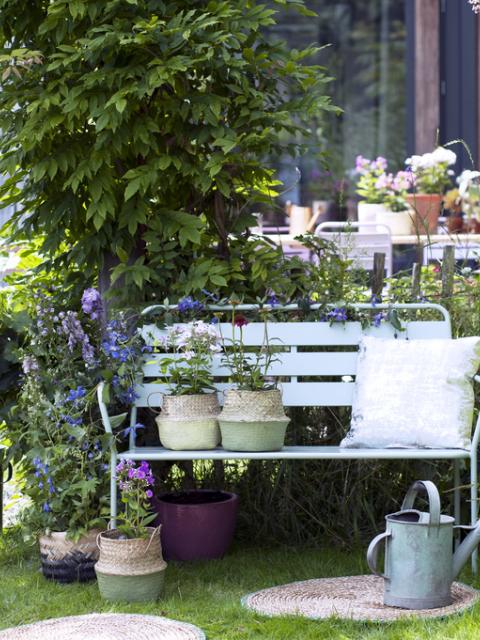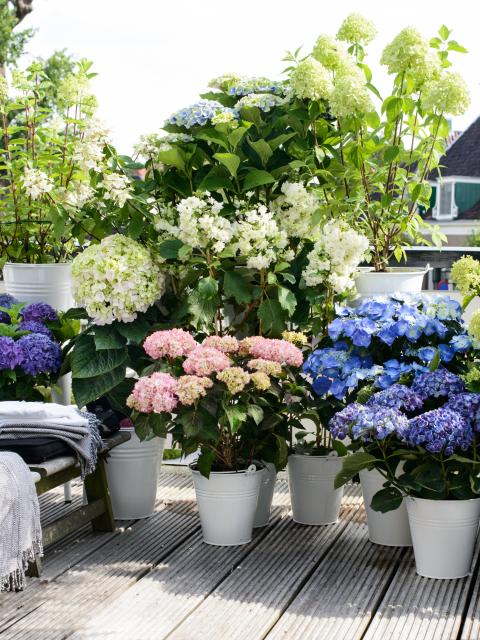Colours and shapes
This is a herbaceous plant from the Aster family with a long, elegant stem. The heart of echinacea, common name coneflower, appears to lift out of the flower in a cone-like shape as it blooms. Because the petals droop a bit, it looks just like a sun hat, appropriate for its high summer flowering season. The coneflower is an easy plant, can cope well with being a little dry and reaches an average height of 90cm. They produce an attractive honey scent that attracts bees, butterflies and other insects.
The modern Echinacea is derived from Echinacea purpurea, whcih takes its name from its crown of purple petals. Breeding has produced a wide choice of colours, from pale yellow to purple, salmon pink, white, orange and green. There is also a large variety of flower shapes, from single petals that droop like skirts, to petals that fan out like a tutu.
Symbolism
Echinacea is credited with medicinal properties, particularly for colds and flu, but there is no firm scientific evidence of this. The name 'Echinacea' comes from the Latin word 'ekhinos' meaning 'hedgehog', which refers to the spiky centre. The flowers work extremely well as cut flowers and can be dried and pressed for artworks.
Origin
Echinacea originates from North America, where it grew on the dry prairies of southern states. Native Americans used the plant for centuries to fight infections. The first plants came to Europe in the 17th century with returning emigrants. In the UK it is commonly used as a classic border plant, although in recent years it has also become more frequently used as a potted plant.
